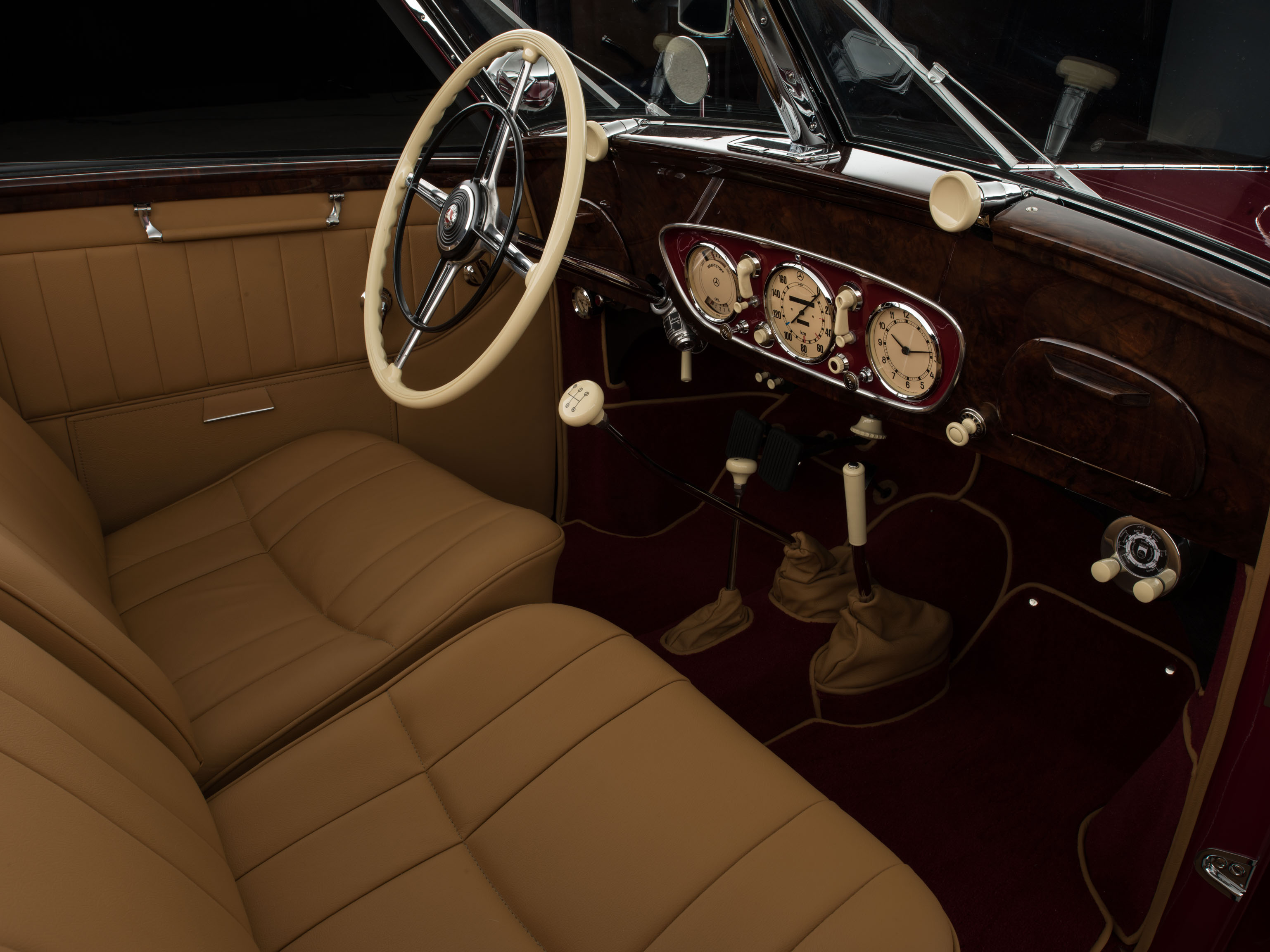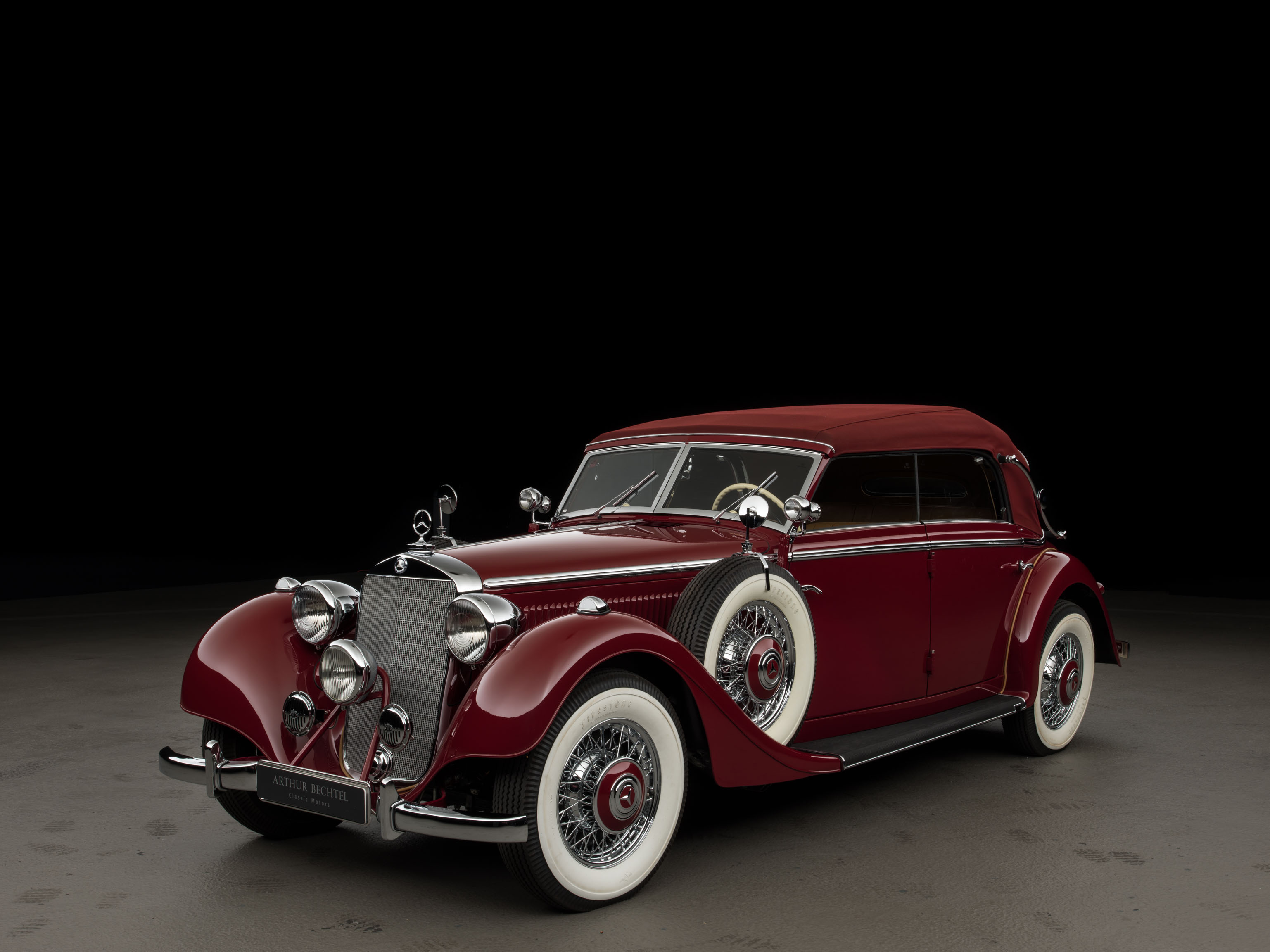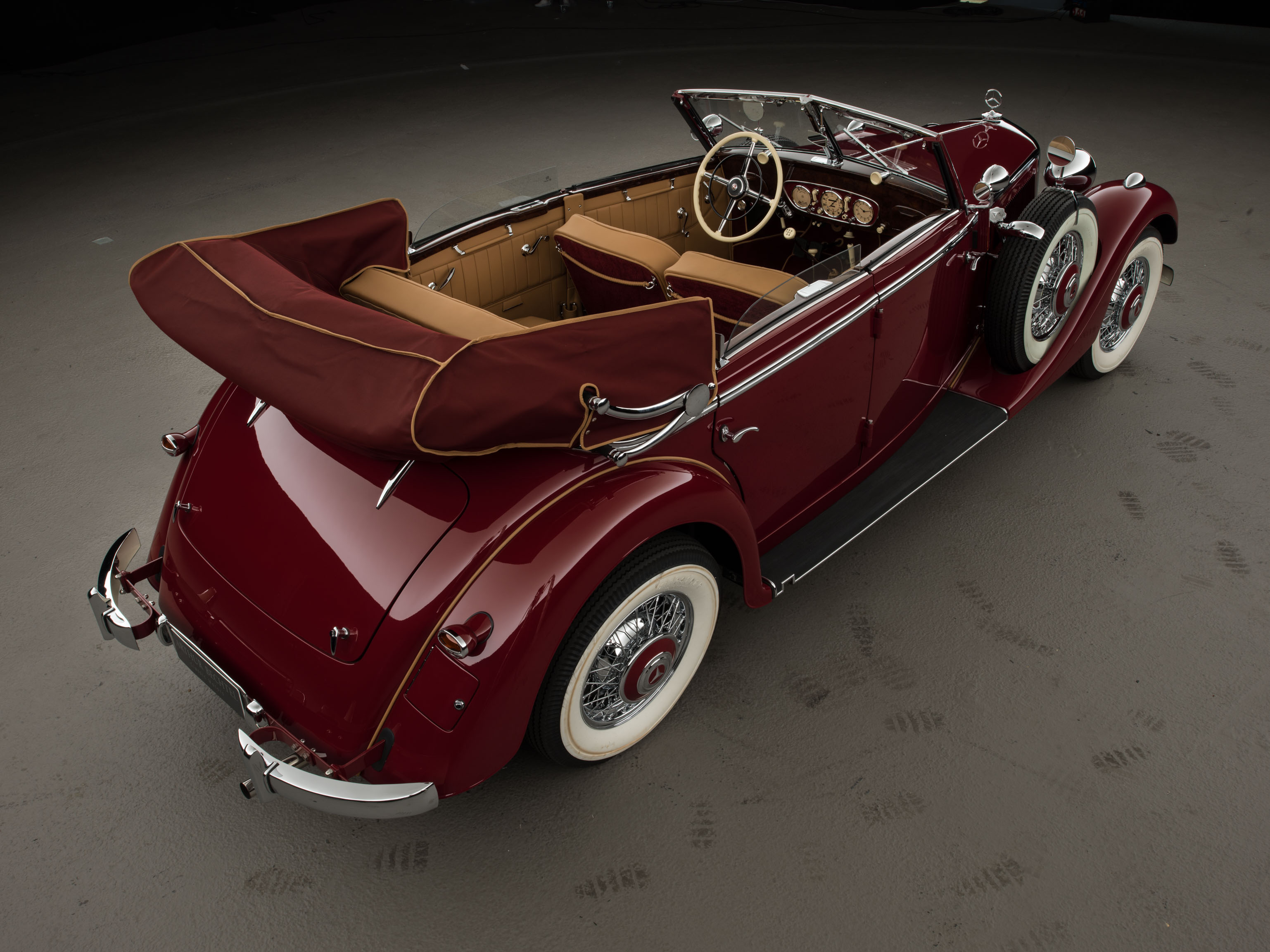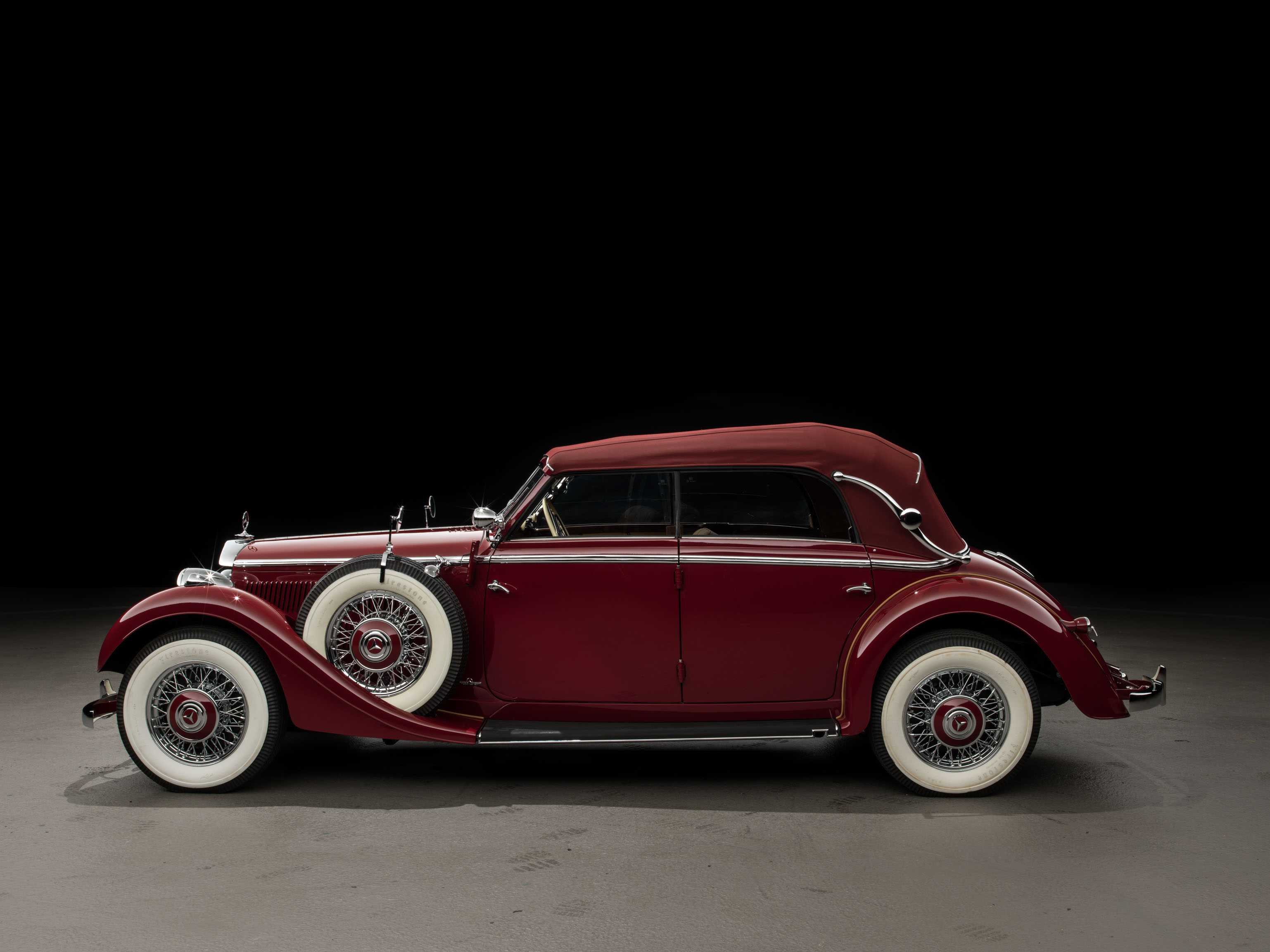Mercedes-Benz 320
Arthur Bechtel Classic Motors has been working with unique classic cars since 1972. Over the years we have had the pleasure of welcoming almost every model of the Mercedes-Benz chronology to our workshop floor. We are talking about icons with a unique history, emotions, characterized by innovative ideas. With our new "Blog Article" series - we jump back along the timeline of the stars and reminisce about the development of these classic cars. Read more about the vehicles that inspire so many of us and have shaped various eras.
Mercedes-Benz 320 - The comfortable representative upper class of the late thirties.
In today's article we take you back to the year 1937. The Mercedes-Benz 320, presented at the IAMA in Berlin in 1937, was the successor to the 290. The advantages of the six-cylinder engine in the 320 were highly praised and emphasized by the trade press of the time, particularly in comparison with the eight-cylinder in-line engines from Horch: after a short warm-up period, smooth running, direct throttle response, comparatively high elasticity and very good pulling power.
The higher engine performance of the six-cylinder engine and the better running smoothness was based on the increased cubic capacity to 3.2 l, the double downdraft carburetor that was now installed and the crankshaft with 12 counterweights. In addition, the 320 now featured a fully synchronized four-speed gearbox. The chassis with independent wheel suspension at the front and a two-joint swing axle at the rear corresponded to that.
The 320 was available in two wheelbases. The two-door Cabriolet A with 2 windows, the combination coupe (removable roof but without a folding top) and the chassis for third-party bodies were all offered on the short chassis. In addition, the Kübelwagen was built on the short chassis for military purposes.
However, the version with the longer wheelbase was much more in demand. The following bodies were available on this: four-door sedan with 4 windows, two-door Cabriolet A with 2 windows, two-door Cabriolet B with 4 windows, two-door Roadster with 2 windows, four-door Cabriolet D with 4 windows (shown on the photos), four-door Cabriolet F with 6 windows, four-door Pullman Limousine with 6 windows, four-door open touring car with 6 windows, four-door streamlined limousine, special body as a "combination vehicle" and as a chassis for third-party bodies.
Overall, the response to the Type 320 in its various versions was very positive. It was considered to be a very pleasant, comfortable touring car that could be used to travel long distances without getting tired.
The revised Type 320 was then presented at the Berlin IAMA in 1939. Due to the generally poorer fuel quality and the resulting loss of performance, the displacement of the engine was increased to 3.4 liters. A measure that all other German automobile manufacturers had also carried out at the time. Power and torque values remained unchanged. The ZF four-speed gearbox now has an additional "long-distance gear". Which can be switched on with a separate lever and reduces the respective speed by 26%. An important measure to protect the engine at high speeds on the new motorways and to reduce fuel consumption. Production of the 320 series ended in 1942 due to the war.
A total of 6,861 Type 320 vehicles were built between 1937 and 1942, including 1,764 Kübelwagen for military purposes.
Written by Claus-Henning Guthard


